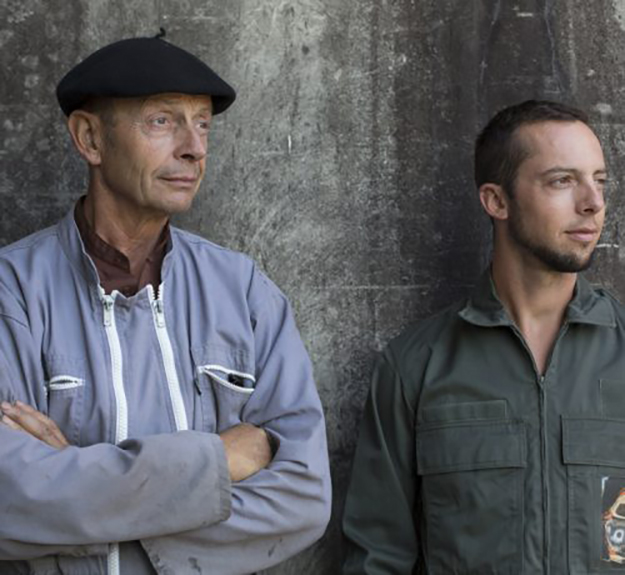Giboin
The Giboin family has been growing grapes and producing Cognac for over two centuries. In 1870, when phylloxera devastated European vineyards, the Hermitage property in the Borderies was largely spared thanks to its compact clay subsoil, which prevented the insect from destroying the roots. Because of the region’s lack of available Cognac, Giboin-ancestor Pierre Lambert was able to sell his brandies at a good price, later building a classic Charentaise house that is still inhabited by the Giboin family today. Pierre’s son Léopold maintained the operation, but it was through the 1953 marriage of Anne-Marie Lambert to her husband, Michel Giboin (who owned vineyards in the Fins Bois commune Apremont), that the Giboin brand was born (and officially launced in the 1960s). It was further developed by Anne-Marie and Michel’s son François and his wife, Brigitte, and when the couple recently retired, it was their sons, Théophile and Pierre-Louis, that took the family torch of Cognac production, seven generations on.
Home base for the Giboins is the Borderies property called l’Hermitage, in Cherves-Richemont, where 13.5 hectares of vines surround the stately home. While much of the Borderies soils contain clay and flint stones derived from decomposed limestone, l’Hermitage has a gypsum subsoil topped with brown clay that is virtually devoid of limestone. Because of the soil’s lower water retention, their vines struggle more than in other areas of the Borderies and yields are generally lower. Ugni Blanc is planted for Cognac along with Merlot for Pineau des Charentes.
The Giboin’s second property is in the village of Apremont, about 20 kilometers south of Angouleme in the southeastern Fins Bois. Here the soil is drastically different from l’Hermitage, with much more chalk and limestone interspersed with flint. Yields are higher than those of l’Hermitage and the grapes grown are purely Ugni Blanc.
The Giboins harvest their grapes with a machine, then bring them back to Cherves-Richemont where they are fermented in large cement tanks. Beginning at the end of November, they distill each property’s yield separately in a copper pot still. Depending on what the release will be, they either distill with or without the lees. For their younger spirits and Pineau des Charentes, they will filter and distill clear wine. For their VSOP, they distill with the lees and for their cognacs that will be aged even longer (Napoléon and XO), they will add lees to produce an even more complex and spicy spirit.
Between six and eight new barrels are purchased each year, and the family ages its spirits in a somewhat original method: Some spirits begin by spending six months in new oak barrels, labeled “A” barrels. “B” barrels are a little older, and eau-de-vie rests here for eight months. “C” barrels have previously held two or three different cognacs and will host new spirit for 10 months. Finally, “D” barrels, which are four and five years old, will hold the new spirits for 12 months. After the initial barrel treatment has done its magic, imparting tannin and structure, the eaux-de-vie are put into older barrels to permit slow oxidation and steady evolution.
Abutting the main house’s north wall, the cellar is built partially underground, dug into the gypsum soils. This provides excellent humidity and a constant temperature during all seasons of the year. Before bottling, blends are made of various vintages and assembled in a large barrel where they marry for at least 12 months. They are then bottled after proofing and a light filtration.
Approximately 7,000 bottles (or 20% of Giboin’s production) is sold annually, either at the property, at trade shows around France, or to other countries including the US and the Czech Republic. Another 20% of the production is kept on the property for further aging and another 20% is used for Pineau des Charentes. What remains (40%) is sold to the famed, much larger Cognac house of Courvoisier, to whom Giboin been a loyal supplier for decades.




